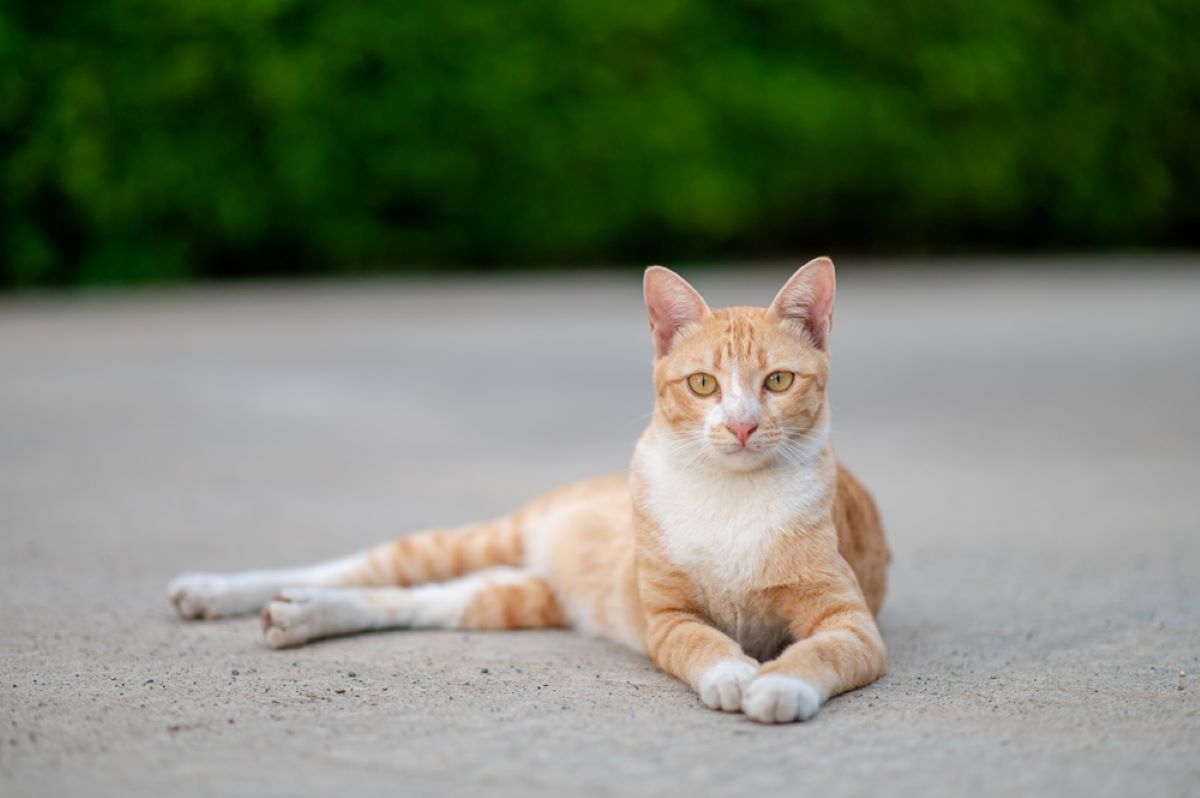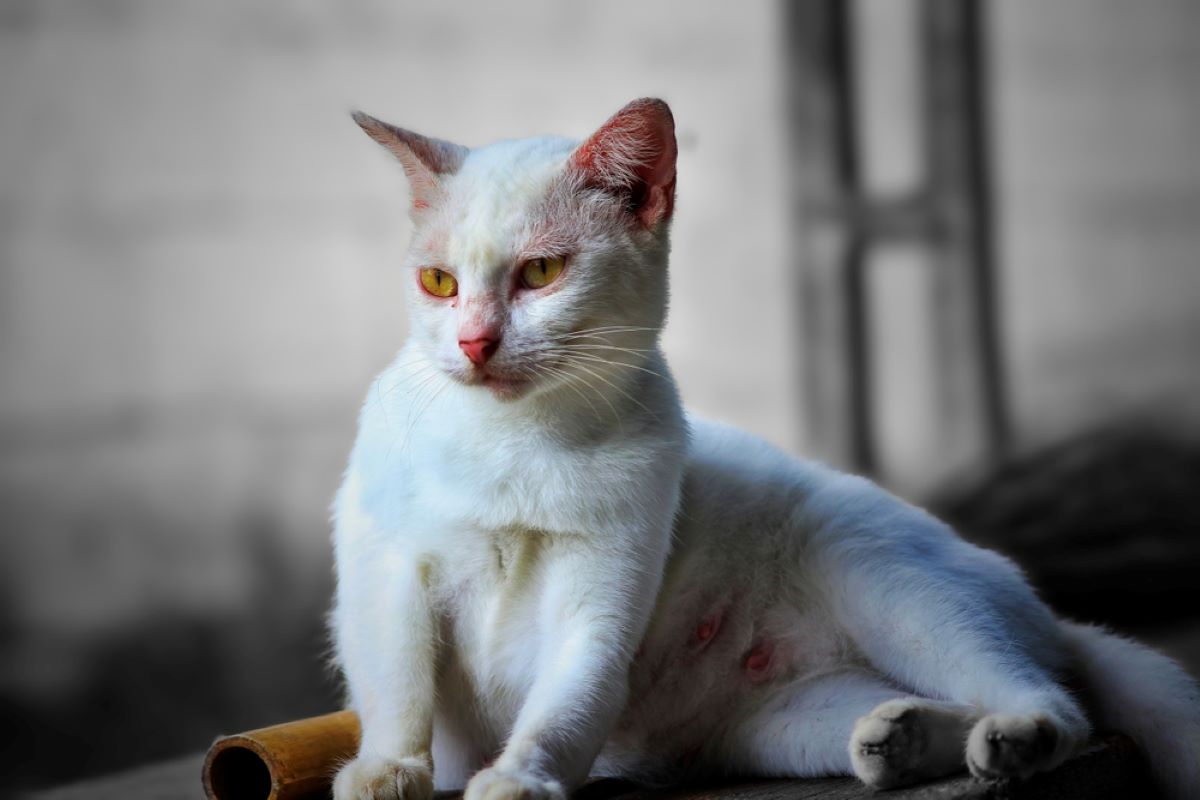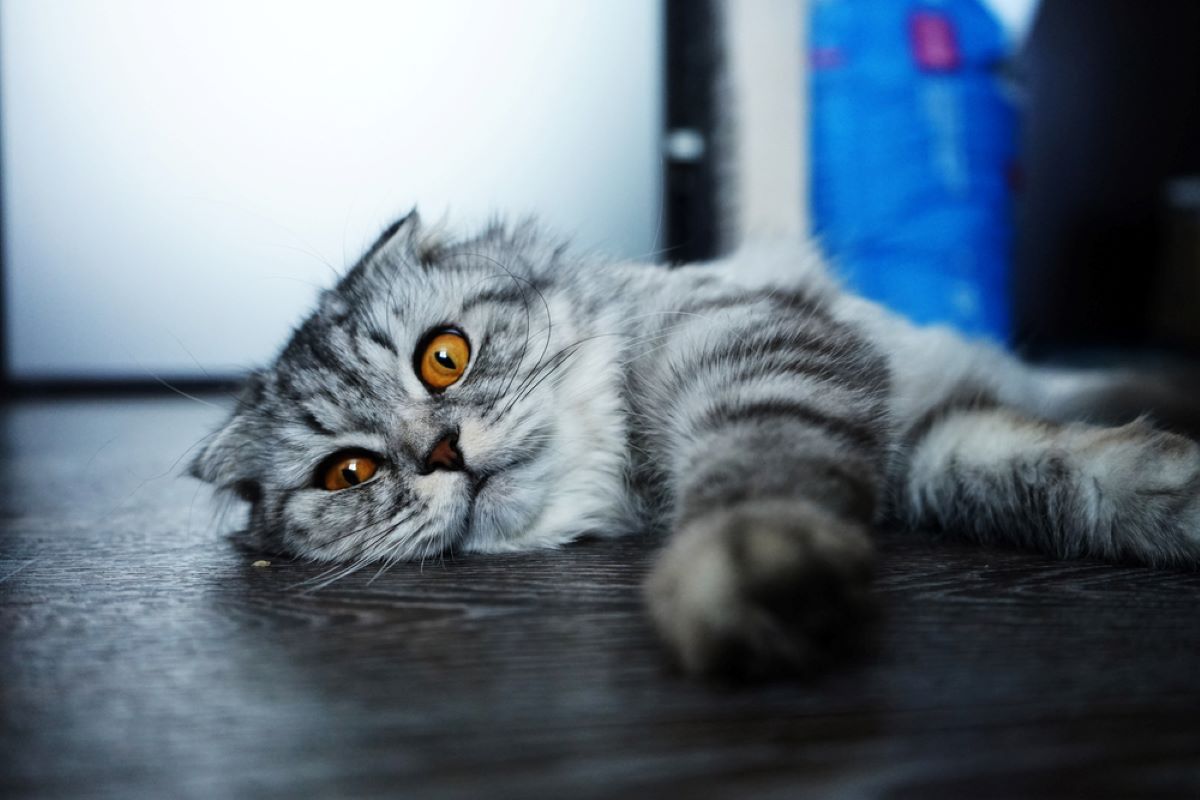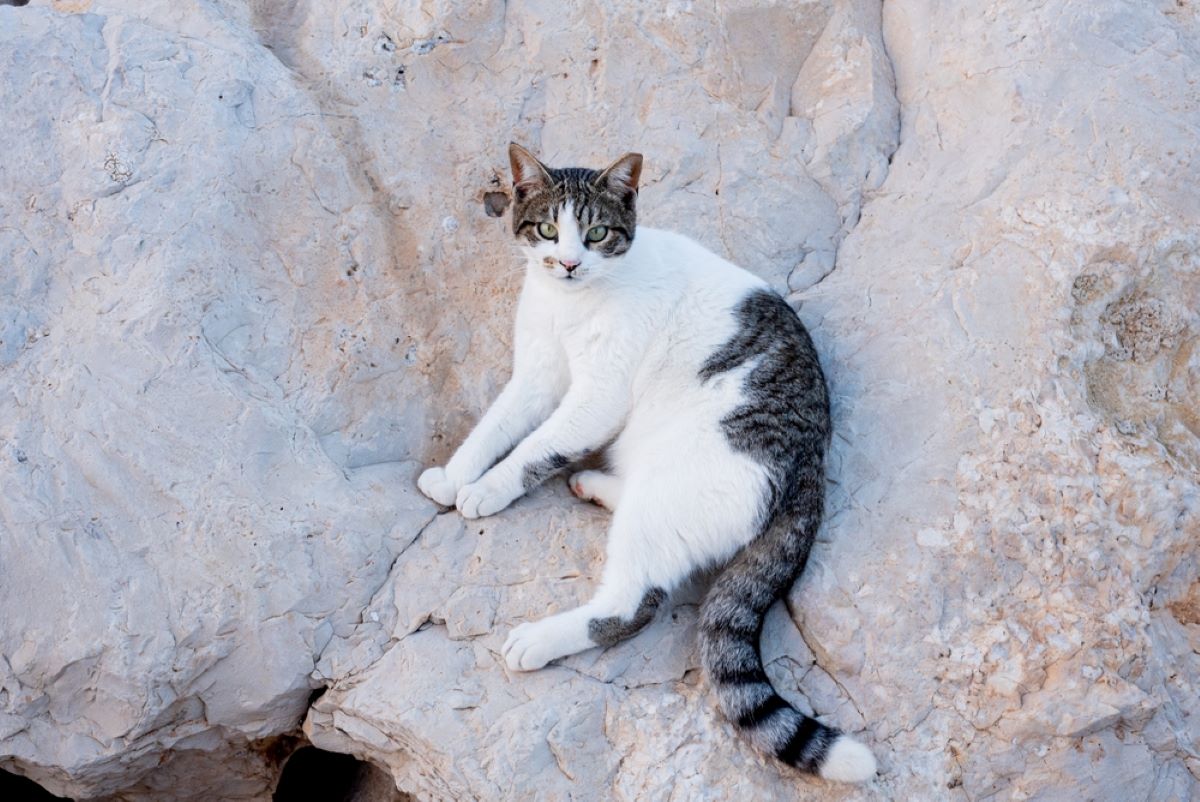We’ve all had parts of our bodies fall asleep. It usually happens when we were stuck in an uncomfortable position for a long time. But once we move a bit, the numbness slowly goes away, and everything goes back to normal. But can cats’ legs fall asleep, too?
To find out if the same thing happens to felines, we first need to understand what the process is. And then we need to see if a cat’s body works in the same way. So, let’s take a look.
What is paresthesia?

Paresthesia is generally known as having numb limbs. It’s caused by pressure placed upon a limb. That pressure is placed directly on the nerves so they can’t function normally anymore. So, they send a signal that the brain can’t quite decipher. When the pressure is constant, it also prevents adequate blood flow.
This causes the numbing sensation, also known as your limbs “falling asleep”. Once the pressure is lifted, the blood circulation is restored back to normal. It alleviates the numbness and the full feeling restores itself in a matter of minutes.
Can cats’ legs fall asleep then?
Let’s take a look at a cat’s position in nature and the food chain. They’re predators that have enemies and need to deal with all sorts of threats. That’s why they need to be able to react quickly and flee whenever the situation calls for it. So, it would be reasonable to assume that felines wouldn’t have paresthesia.
When we look at the way cats are built, it becomes clear how unlikely it’s for their limbs to fall asleep. Their flexibility makes it possible for them to take whatever position they want. Paired with their small mass, it makes cutting off blood flow highly improbable.
The feline circulatory system is a bit different from ours, so their circulation isn’t as easily disrupted by a sitting position. If you see your cat have trouble getting up, take her to the vet. Her legs aren’t asleep, but it could be a sign of other issues.
So, when it comes to paresthesia, your kitty basically won the evolutionary lottery. If you still notice that she has trouble getting up or that she’s limping, you should get to the root of the problem. Her legs didn’t fall asleep and there’s something else causing this issue.
1. Leg paralysis

Leg paralysis is a condition much worse than legs falling asleep. That’s why it’s so important to remember that cats can’t have paresthesia. Don’t dismiss unusual behavior because it could lead to much bigger issues in the future. Or it could cause you to ignore an already existing problem.
This condition causes your feline to be unable to move or feel one or multiple of her limbs. Any alteration to her motor and sensory functions in her limbs is called paralysis. It needs to be acted upon immediately or your cat’s condition will deteriorate.
You might think you have time and that you don’t need to rush. However, one paralyzed leg can very quickly turn into paraplegia and then tetraplegia. Paraplegia is the inability to move two legs and tetraplegia to move all four.
Leg paralysis can be caused by several different things. Some of the most common reasons are viruses, accidents, and trauma. The condition should not be taken lightly and the sooner it’s discovered, the easier it’ll be to treat.
2. Diabetic neuropathy
Diabetic neuropathy is a complication present in hyperglycemic cats. It affects the femoral nerve and leads to a plantigrade gait, which means walking on the whole foot. Humans and animals like rabbits or bears walk like that, but felines walk on their toes.
So, when their whole foot lowers, it’s a cause for concern. The nerves and joints of the hind legs gradually become more and more damaged. This can lead to their legs dragging along as they walk. If you see this kind of unusual behavior, take them to a vet immediately.
3. Hip dysplasia

If your feline displays difficulty getting up after a nap, it could be a sign of hip dysplasia. It may look like her legs just fell asleep, but that definitely isn’t the reason. It manifests as rear leg weakness or lethargy. The reason behind it is that the hip joint developed abnormally.
The disease is genetic in most cases and especially present in particular cat breeds. Some examples are Maine Coons, the Himalayans, and the Persians. A way to catch this disease is to see if your feline has trouble with her hind legs even while standing.
4. Arthritis
If your feline is slowly approaching her later years, arthritis might be the most common answer. It’s a condition that targets the joints and only gets worse over time. It’s very painful, so your cat will probably try to avoid certain movements.
She might stop using her climbing tree, avoid stairs, lay around more, and become overall less active. Her symptoms might also look a lot like hip dysplasia. Because the condition can look a lot like limbs falling asleep, a lot of owners ignore it. At least until they see that their feline limps even hours after her nap.
To avoid causing her even more pain, take her to the vet as soon as you notice anything. Arthritis can’t really be cured, but a vet will be able to help you give your cat the best life possible.
5. Blood clot

One of the rarest scenarios possible, but it’s also the scariest. If a blood clot blocks the arteries to your feline’s legs, there’ll be a few symptoms. Aside from limping and dragging her feet, your feline will also probably scream in pain.
Paralysis is also a very possible outcome. It’s a very dangerous situation so it’s important to act as soon as you notice anything. Blood clots can also very easily be lethal. That’s why you should never ignore abnormal behavior.
6. Kidney failure
Kidney failure shouldn’t be too difficult to miss. Unlike the other issues, it drags along a lot of other symptoms, too. Those are usually frequent but weak urination, loss of appetite, greasy coat, and lethargy. In the later stages, your cat’s breath will also start smelling like ammonia.
The condition causes the levels of potassium in your feline’s body to drop. This causes general weakness, but it also affects the strength of her legs. She will probably move around much less and drag her feet or even limp.
7. Other causes
We’ve named only a few possible reasons behind feline leg weakness. But there are so many possible illnesses and conditions. They can be caused by injuries (maybe you stepped on her, or a child sat on her back), neurological issues, etc.
You couldn’t possibly pinpoint it down by yourself. Thankfully, we have veterinarians and if we spot symptoms in time, they can diagnose the problem. Your feline will get the help she needs, and no further complications should occur.
The bottom line

We’ve gone over everything from what paresthesia is to the feline physique. And we’ve answered, “Can cats’ legs fall asleep?” with a definite no. So, now that you know that scenario isn’t possible in any given situation, never forget it.
If you let yourself believe that your cat’s legs can fall asleep, you might miss symptoms of something serious. Behind every change in movement or behavior could be a hundred possible conditions or illnesses.
It could be something as simple as a strained paw, or it could be a very dangerous blood clot. Keep your eyes open and keep track of her habits. The moment you see any abnormality, take action. Every wasted second is a second you could’ve spent helping her.
The sooner you take her to the vet, the sooner he’ll be able to diagnose the issue. Late diagnosis only leads to complications and makes the conditions more difficult to treat. Your kitty will be thankful for your quick response.

